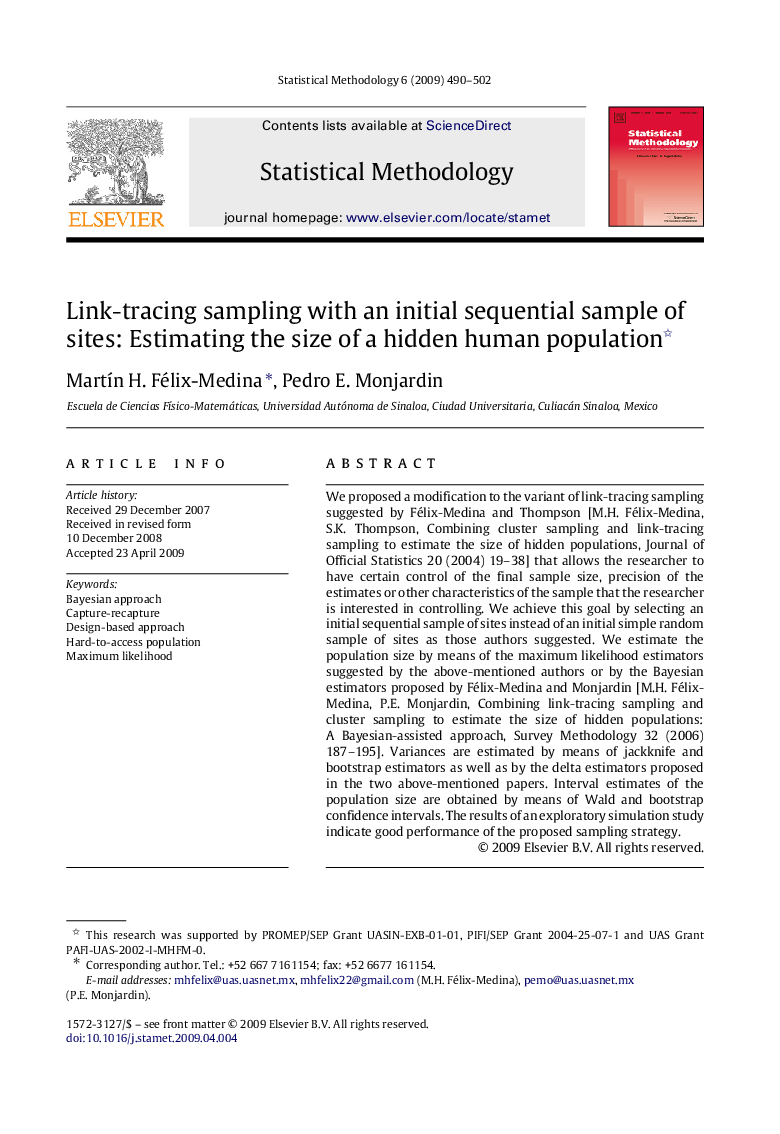| Article ID | Journal | Published Year | Pages | File Type |
|---|---|---|---|---|
| 1151996 | Statistical Methodology | 2009 | 13 Pages |
We proposed a modification to the variant of link-tracing sampling suggested by Félix-Medina and Thompson [M.H. Félix-Medina, S.K. Thompson, Combining cluster sampling and link-tracing sampling to estimate the size of hidden populations, Journal of Official Statistics 20 (2004) 19–38] that allows the researcher to have certain control of the final sample size, precision of the estimates or other characteristics of the sample that the researcher is interested in controlling. We achieve this goal by selecting an initial sequential sample of sites instead of an initial simple random sample of sites as those authors suggested. We estimate the population size by means of the maximum likelihood estimators suggested by the above-mentioned authors or by the Bayesian estimators proposed by Félix-Medina and Monjardin [M.H. Félix-Medina, P.E. Monjardin, Combining link-tracing sampling and cluster sampling to estimate the size of hidden populations: A Bayesian-assisted approach, Survey Methodology 32 (2006) 187–195]. Variances are estimated by means of jackknife and bootstrap estimators as well as by the delta estimators proposed in the two above-mentioned papers. Interval estimates of the population size are obtained by means of Wald and bootstrap confidence intervals. The results of an exploratory simulation study indicate good performance of the proposed sampling strategy.
